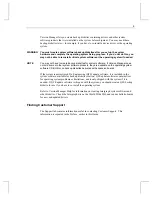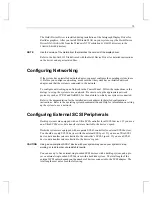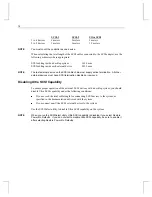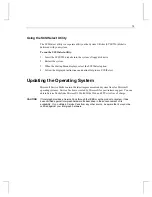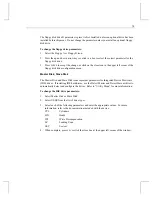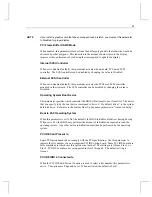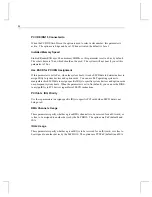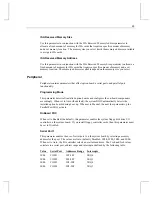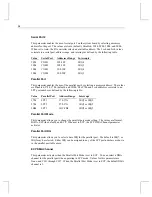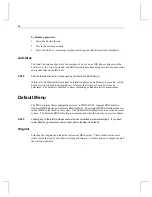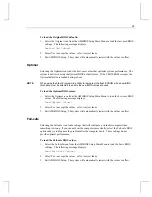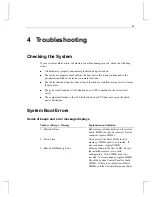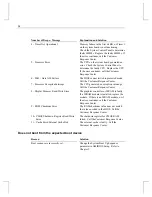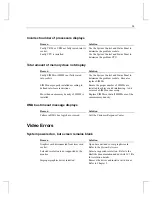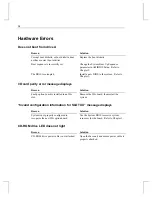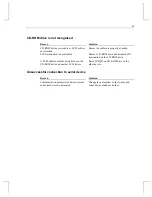
23
NOTE
If you install a graphics card that does not support read prefetch, you must set this parameter
to Disabled for proper display.
PCI Frame Buffer USWC Mode
When enabled, this parameter removes from the buffer polygon data that otherwise would be
obscured by other polygons. This reduction in the amount of data written to the display
improves video performance by reducing the time required to update the display.
Internal SCSI Controller
When set to Enabled (default), this parameter activates the on-board, PCI-based SCSI
controller. The SCSI controller can be disabled by changing the value to Disabled.
External SCSI Controller
When set to Enabled (default), this parameter activates the PCI-based SCSI controller
mounted on the riser card. The SCSI controller can be disabled by changing the value to
Disabled.
Operating System Boot Device
This parameter specifies which controller the BIOS will attempt to boot from first. The device
that you specify to be the boot device is assigned to drive C. By default, drive C is the system
hard disk drive. Refer also to the System Boot Up Sequence parameter in “Advanced Setup.”
Boot to PnP Operating System
When this parameter is set to No (the default), the BIOS initializes all devices during boot up.
When set to Yes, the BIOS only performs the amount of initialization required to load the
operating system. Any other device initialization must then be performed by the operating
system.
PCI IDE Card Present in
Some PCI option boards do not comply with the PCI specification. Use this parameter to
indicate the slot number of a non-compliant PCI IDE option board. Some PCI IDE boards are
fully compliant, in which case this option is not needed. The settings are Absent, Slot 1, or
Slot 2. PCI IDE boards are never supported in slots 3 through 6. The default setting is
Absent.
PCI IDE IRQ14 Connected to
When the PCI IDE Card Present In option is used to select a slot number, this parameter is
active. The options are Edge and Level. When activated, the default is Level.

